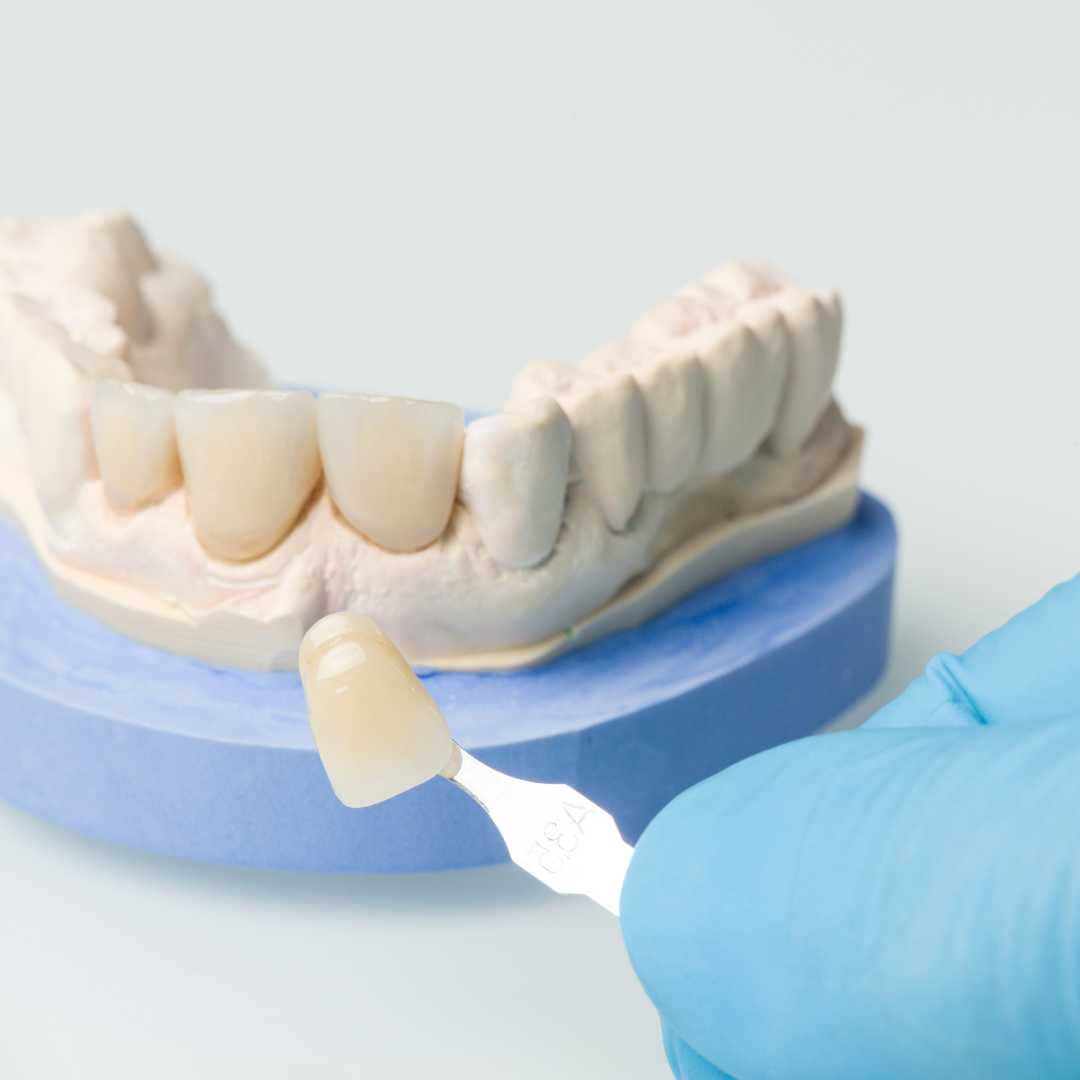Step-by-Step Procedure for Getting Veneers in Mexico
.jpg)
Thinking about a smile transformation with veneers? Many people are looking south of the border to Mexico for high-quality, affordable dental care, and for good reason. Getting veneers in Mexico has become a popular option for those seeking to enhance their smile without the hefty price tag often found in the US or Canada. It's an opportunity to combine a dental trip with a vacation, making the experience even more appealing.
If you're curious about the process, you're in the right place. This guide will walk you through everything you need to know about getting veneers in Mexico, from the initial consultation to the final reveal of your new, radiant smile. We'll cover the typical procedure, costs, safety considerations, and what you can expect every step of the way, ensuring you feel confident and well-informed about your dental tourism journey.
What is the typical procedure for getting veneers in Mexico?
The journey to a brighter smile with veneers in Mexico generally follows a well-defined process, typically completed over two visits separated by a few days. Understanding these steps can help you feel more prepared and confident about your decision.
Here’s a breakdown of what to expect:
- Initial Consultation and Examination: Your first step involves a thorough examination by the dentist. This includes discussing your aesthetic goals, reviewing your medical history, and often taking X-rays, photos, and digital scans of your teeth. The dentist will assess your oral health to ensure you are a suitable candidate for veneers and discuss the best type of veneers for your needs.
- Tooth Preparation: If veneers are right for you, the dentist will prepare your teeth. This usually involves removing a small amount of enamel from the front surface of the teeth – typically less than a millimeter. This minimal preparation creates space for the veneers to fit naturally and blend seamlessly with your existing teeth. It's a precise process designed to preserve as much of your natural tooth structure as possible.
- Impressions and Temporary Veneers: After preparation, accurate impressions of your teeth are taken. These impressions, either traditional molds or digital scans, are sent to a dental laboratory where your custom veneers will be fabricated. While your permanent veneers are being made (which can take a few days), temporary veneers are usually placed to protect your prepared teeth and maintain aesthetics. These temporaries give you a preview of your future smile.
- Final Bonding Appointment: Once your custom veneers arrive from the lab, you’ll return for your second appointment. The dentist will first place the veneers on your teeth to check their fit, color, and shape. Any minor adjustments can be made at this stage. Once you and the dentist are satisfied, the teeth are thoroughly cleaned, etched, and then the veneers are permanently bonded using a strong dental cement and a special light to cure it. After bonding, the dentist will make any final adjustments to your bite and polish the veneers.
How much do veneers cost in Mexico compared to the US or Canada?
One of the primary reasons people choose to get veneers in Mexico is the substantial cost savings. The difference in price can be quite dramatic, making a full smile makeover much more accessible.
Here's a comparison of typical costs:
| Location | Average Cost Per Veneer | Typical Range |
|---|---|---|
| United States | $1,500 | $1,000 - $2,500+ |
| Canada | $1,200 | $800 - $2,000+ |
| Mexico | $550 | $350 - $800 |
These figures can vary based on the specific clinic, the type of veneers chosen (e.g., porcelain, composite), the dentist's experience, and the location within Mexico (e.g., border towns versus larger cities). Even when factoring in travel and accommodation expenses, the overall cost of getting veneers in Mexico often remains significantly lower, making it an attractive option for many seeking high-quality dental work.
Are veneers in Mexico safe and high-quality?
The safety and quality of dental care in Mexico are often a primary concern for international patients, and rightly so. The good news is that many dental clinics in Mexico, particularly those catering to dental tourism, maintain very high standards comparable to those in the US and Canada. These clinics often invest in state-of-the-art equipment, use premium materials, and employ dentists who have received training from prestigious international institutions.
However, like any medical decision, due diligence is essential. It's important to research and choose reputable clinics that are transparent about their qualifications, accreditations, and patient testimonials. Look for clinics that prioritize sterilization protocols, use high-quality dental labs for veneer fabrication, and have dentists with specific experience in cosmetic dentistry and veneer procedures. Many clinics will readily provide information about their dentists' credentials and the materials they use, helping you make an informed choice.
How many visits are required for veneers in Mexico?
The standard procedure for getting veneers is designed to be completed over two main appointments. This structure allows adequate time for the dental lab to custom-craft your veneers while minimizing your travel time.
- First Visit (Day 1 or 2): This comprehensive appointment includes your initial consultation, detailed examination, any necessary tooth preparation (enamel shaping), and taking precise impressions of your prepared teeth. You will typically leave this appointment with temporary veneers to protect your teeth and give you a preview of your new smile.
- Second Visit (Day 4-7, depending on lab time): After your custom veneers have been fabricated by the dental lab (which usually takes 2-5 business days), you will return for your second and final appointment. During this visit, your temporary veneers are removed, and your permanent veneers are carefully fitted, adjusted for optimal comfort and aesthetics, and then permanently bonded to your teeth.
This two-visit structure allows for efficient treatment planning and execution. While some clinics might offer "same-day" or "one-day" veneers using in-house CAD/CAM technology, traditional lab-fabricated porcelain veneers typically require these two separate visits to ensure the highest quality and custom fit. It's a good idea to plan for at least a week-long stay in Mexico to comfortably accommodate both appointments and any potential minor adjustments.
What types of veneers are available in Mexico?
When considering veneers, understanding the different types available is crucial, as each has its own characteristics, benefits, and cost implications. Mexican dental clinics offer the same range of high-quality veneer materials you'd find elsewhere.
- Porcelain Veneers: These are the most popular and durable type of veneers. They are custom-made in a dental laboratory from high-quality dental porcelain. Porcelain veneers are highly resistant to stains, mimic the light-reflecting properties of natural teeth beautifully, and can last for 10-15 years or even longer with proper care. They offer superior aesthetics and strength.
- Composite Resin Veneers: Also known as "bonding," composite veneers are made from a tooth-colored resin material applied directly to the tooth surface and sculpted by the dentist. While they are a more affordable option and often require less tooth preparation (sometimes none), they are generally not as durable or stain-resistant as porcelain veneers and typically last 5-7 years. They can often be completed in a single visit.
- E-max Veneers: A specific type of porcelain veneer, E-max (lithium disilicate glass-ceramic) is known for its exceptional strength, durability, and translucent quality, providing a very natural appearance. Many high-end clinics in Mexico offer E-max veneers as a premium option.
Your dentist in Mexico will discuss these options with you, considering your budget, aesthetic goals, and oral health to help you choose the best type of veneer for your smile transformation.
How do I choose a reputable dental clinic for veneers in Mexico?
Choosing the right clinic is perhaps the most critical step in ensuring a successful and satisfying experience with veneers in Mexico. A little research goes a long way in finding a trusted provider.
Here are key factors to consider:
- Accreditations and Certifications: Look for clinics that are accredited by international organizations or recognized by professional dental associations. This often indicates adherence to global standards of care and safety.
- Dentist's Qualifications and Experience: Verify the dentist's educational background, specialization in cosmetic dentistry, and years of experience specifically with veneer procedures. Many reputable dentists in Mexico have received training in the US or Europe.
- Patient Reviews and Testimonials: Online reviews on platforms like Google, Yelp, or dedicated dental tourism forums can offer valuable insights into other patients' experiences regarding treatment quality, clinic cleanliness, and customer service. Look for consistent positive feedback.
- Technology and Materials: Inquire about the technology used for diagnostics and treatment (e.g., digital X-rays, CAD/CAM for veneers) and the brands of materials they utilize (e.g., porcelain type, bonding agents). High-quality materials contribute to the longevity and aesthetics of your veneers.
- Transparency and Communication: A good clinic will be transparent about their pricing, treatment plans, and potential risks. They should also have staff who can communicate clearly in English, making your experience smooth and understandable.
Don't hesitate to ask for before-and-after photos of previous veneer cases and schedule a virtual consultation to get a feel for the clinic and dentist before you travel.
What preparation is needed before traveling to Mexico for veneers?
Proper preparation before your trip to Mexico can significantly reduce stress and ensure a smooth dental tourism experience. Planning ahead for both your dental treatment and travel logistics is key.
- Dental Consultation (Remote): Many clinics offer virtual consultations where you can discuss your goals, send photos, and get an initial assessment and quote. This helps confirm that veneers are a suitable treatment for you before you travel.
- Travel Documents: Ensure your passport is valid and check if you need a visa for Mexico based on your nationality. For US and Canadian citizens, a valid passport is usually sufficient.
- Travel and Accommodation: Book your flights and accommodation well in advance, especially if you’re traveling during peak seasons. Many clinics can recommend or assist with finding suitable hotels near their facilities. Plan for a stay of at least 5-7 days to accommodate both veneer appointments.
- Financial Planning: Confirm the total cost of your veneers, including any potential additional fees. Discuss payment methods and any financing options if available. It's wise to have some local currency (Mexican Pesos) for small purchases.
- Medical Information: Be ready to provide your complete medical history, including any allergies, medications you're taking, or existing health conditions. This information is crucial for your safety during treatment.
It's also a good idea to purchase travel insurance that includes medical coverage, just in case of unforeseen circumstances during your trip.
What are the potential benefits of getting veneers in Mexico?
The appeal of getting veneers in Mexico extends beyond just the price. There are several compelling benefits that draw patients from around the world.
- Significant Cost Savings: As mentioned, the most prominent advantage is the reduced cost, often 50-70% less than in Western countries, making a dream smile achievable for many.
- High-Quality Care and Technology: Many Mexican clinics catering to international patients boast state-of-the-art equipment, modern facilities, and use premium materials, ensuring high standards of dental care.
- Experienced Dentists: A large number of Mexican dentists have received advanced training and specialize in cosmetic dentistry, with extensive experience in veneer placement.
- Shorter Wait Times: Unlike some public healthcare systems, scheduling appointments for veneers in Mexico is often quicker and more flexible, allowing for faster treatment.
- Dental Tourism Opportunity: The chance to experience Mexico's rich culture, beautiful beaches, or vibrant cities while undergoing dental work adds an attractive leisure component to your medical trip.
- No Insurance Hassle: For many international patients, paying directly for treatment in Mexico can be simpler than navigating complex insurance claims, especially since cosmetic procedures like veneers are often not covered by insurance.
These combined factors make Mexico a highly attractive destination for those seeking to improve their smile with veneers.
Are there any risks associated with getting veneers in Mexico?
While the benefits are significant, it's important to be aware of potential risks associated with seeking dental treatment abroad, including veneers in Mexico. Being informed allows you to take steps to mitigate these risks.
- Substandard Care: The primary risk is choosing an unqualified or unethical provider. This can lead to poorly fitted veneers, improper tooth preparation, or the use of inferior materials, which could compromise your oral health and require corrective treatment later.
- Communication Barriers: While many dental tourism clinics have English-speaking staff, language differences outside the clinic or with certain staff members could lead to misunderstandings.
- Lack of Recourse: If a problem arises after you return home, seeking legal or medical recourse in a foreign country can be challenging and costly.
- Travel-Related Issues: Unexpected travel delays, health issues during travel, or acclimatization problems can add stress to your experience.
- Post-Treatment Complications: As with any dental procedure, complications like sensitivity, veneer detachment, or gum irritation can occur. While good clinics offer warranties, addressing these issues from afar can be inconvenient.
To minimize these risks, thorough research, choosing an accredited clinic with verifiable credentials, and maintaining open communication are paramount. Always prioritize quality and safety over merely the lowest price.
What is the aftercare process for veneers obtained in Mexico?
Once your veneers are in place, proper aftercare is essential to ensure their longevity and maintain your beautiful new smile. The aftercare instructions for veneers from Mexico are generally the same as those from anywhere else.
- Excellent Oral Hygiene: Continue to brush and floss your teeth diligently. Use a non-abrasive toothpaste and a soft-bristled toothbrush to clean your veneers and surrounding natural teeth. Flossing is crucial to prevent gum disease and decay around the veneers.
- Avoid Hard or Abrasive Foods: While porcelain veneers are durable, they are not indestructible. Avoid biting into extremely hard foods (like ice, hard candies, or bones), using your teeth to open packages, or chewing on non-food items, as this can chip or fracture the veneers.
- Address Teeth Grinding/Clenching: If you grind or clench your teeth (bruxism), especially at night, your dentist might recommend a custom nightguard to protect your veneers from excessive force.
- Regular Dental Check-ups: Continue to schedule regular check-ups and cleanings with your local dentist every six months. Your dentist can monitor the health of your veneers, check for any issues, and perform professional cleanings. If you return to Mexico regularly, you can also schedule follow-up appointments with your treating dentist there.
- Stain Prevention: While porcelain veneers are highly stain-resistant, excessive consumption of highly pigmented foods and drinks (coffee, tea, red wine, berries) can still lead to slight staining over time, particularly around the edges. Good oral hygiene helps mitigate this.
Following these aftercare guidelines will help maximize the lifespan of your veneers and keep your smile looking its best for many years.
What is the role of dental tourism agencies like PlacidWay in getting veneers in Mexico?
For many international patients, navigating the process of getting dental work in a foreign country can seem daunting. This is where dental tourism agencies play a vital role, acting as a bridge between patients and healthcare providers abroad.
A reputable agency like PlacidWay offers comprehensive services designed to streamline your entire experience of getting veneers in Mexico:
- Clinic Vetting and Selection: They partner with a network of pre-screened, high-quality dental clinics in Mexico that meet international standards. This eliminates much of the guesswork and research for the patient.
- Treatment Planning Assistance: Agencies help facilitate communication between you and the dental clinic, ensuring your dental records and goals are clearly understood, and assisting with obtaining accurate treatment plans and cost estimates.
- Logistical Support: This often includes help with booking flights, arranging airport transfers, securing accommodation, and sometimes even local transportation to and from the clinic. They aim to make the travel aspect as seamless as possible.
- Language and Communication: They often provide translation services or work with clinics that have English-speaking staff, ensuring clear communication throughout your journey.
- Ongoing Support: From your initial inquiry to your return home, a good agency offers continuous support, addressing any questions or concerns that may arise before, during, or after your treatment.
By leveraging the expertise of a dental tourism agency, patients can feel more secure and confident in their decision to pursue veneers in Mexico, knowing that many of the logistical and vetting challenges are handled by experienced professionals.
Ready to transform your smile with veneers or explore other dental and medical treatments abroad? Discover trusted clinics and comprehensive solutions through PlacidWay. Visit PlacidWay to learn more and connect with expert providers for your healthcare journey.


.png)






.png)
.png)






Share this listing